The courtly year was regularly punctuated with celebrations in which guests dressed up in fantastical and exotic costumes. Such occasions were more than simply costumed parties, occasions for partygoers to let their hair down and have some fun. Guests had to navigate a complicated world of status distinctions, and such masquerades were never divorced from the courts’ need to trumpet their power and prestige. Elaborate costumes and displays were at the heart of these efforts, and courtly artists worked hard to impress through the sophistication of their design, the technical craft of their production, and the novelty of their figures. As such, their products can be taken as a measure of the breadth of contemporaries’ imaginations. Costumes of “Moors” were inspired in large part by travel reports, and they generally followed conventions set out in famous guides like Vecellio’s well-known survey of the world’s costumes, which distinguishes between the richly clothed noble Moors of northern Africa and the almost naked “Black Moors.” Such catalogues give us an insight into Europeans’ fantasies and prejudices, and they also show us one means by which these circulated around Europe.

Catch the ring: Moors and knights 
Rider with standard 
Standard-bearer and Moorish musicians 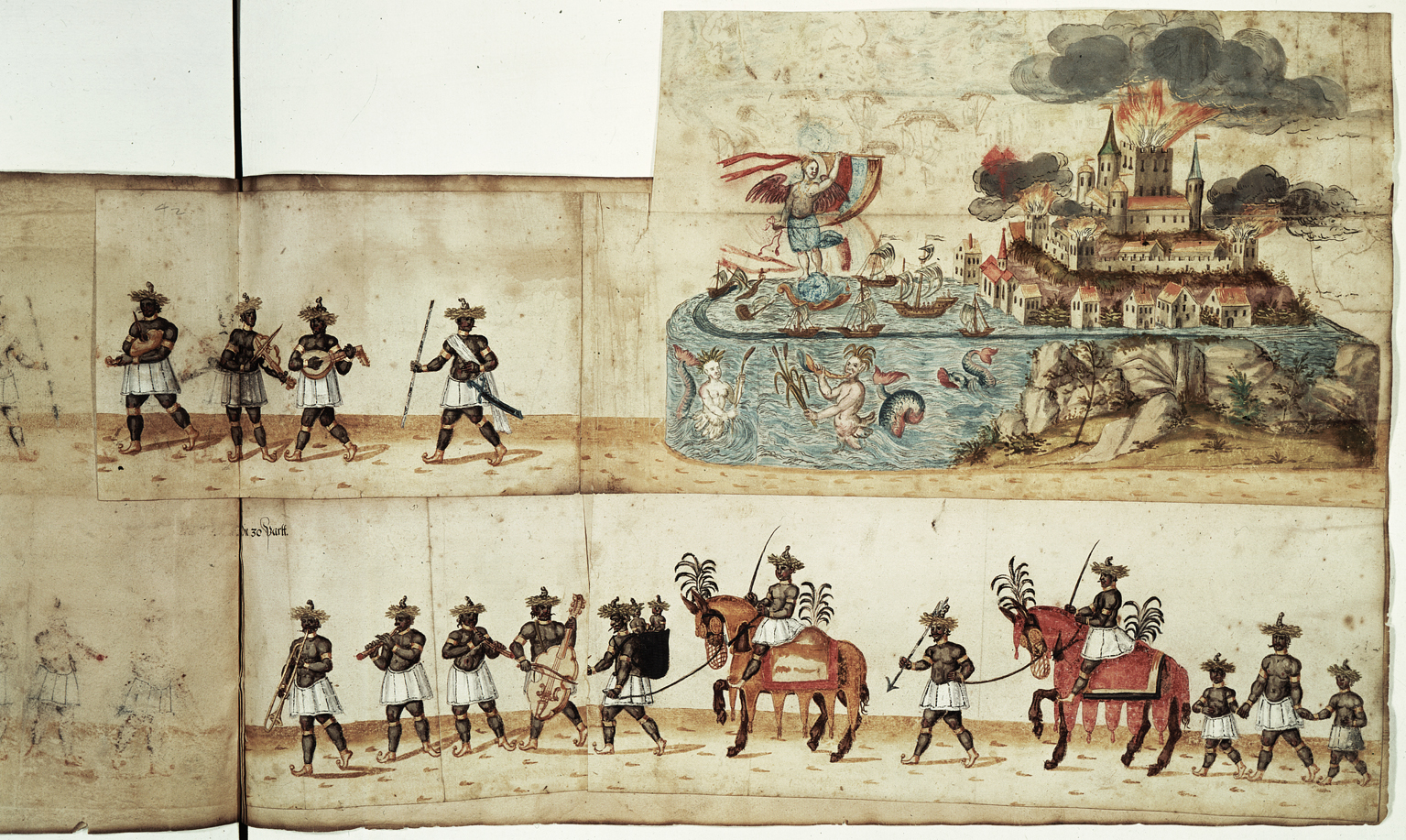
Moorish band with burning castle 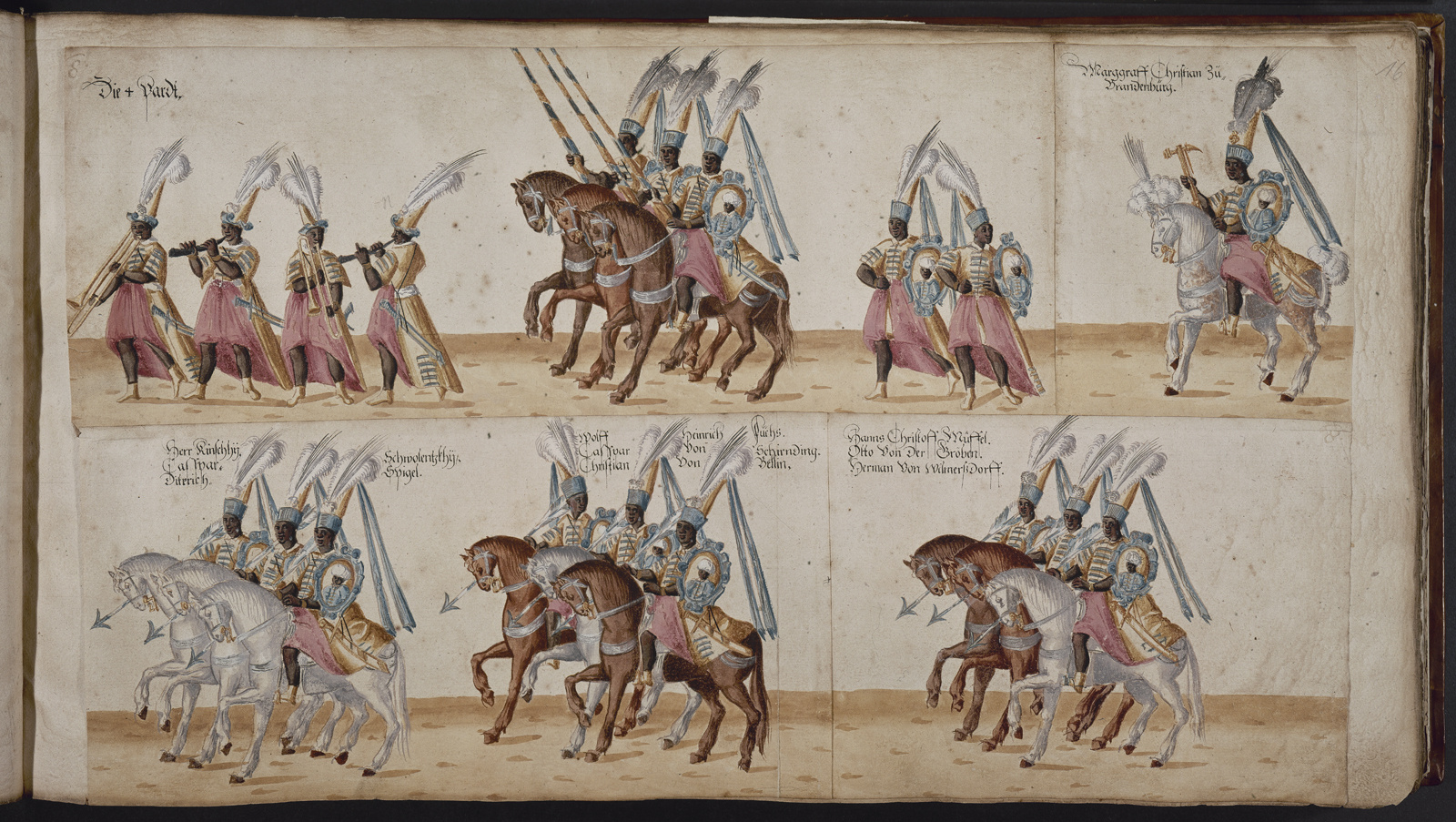
Indian band including Margrave Christian of Brandenburg 
Carriage with the four continents 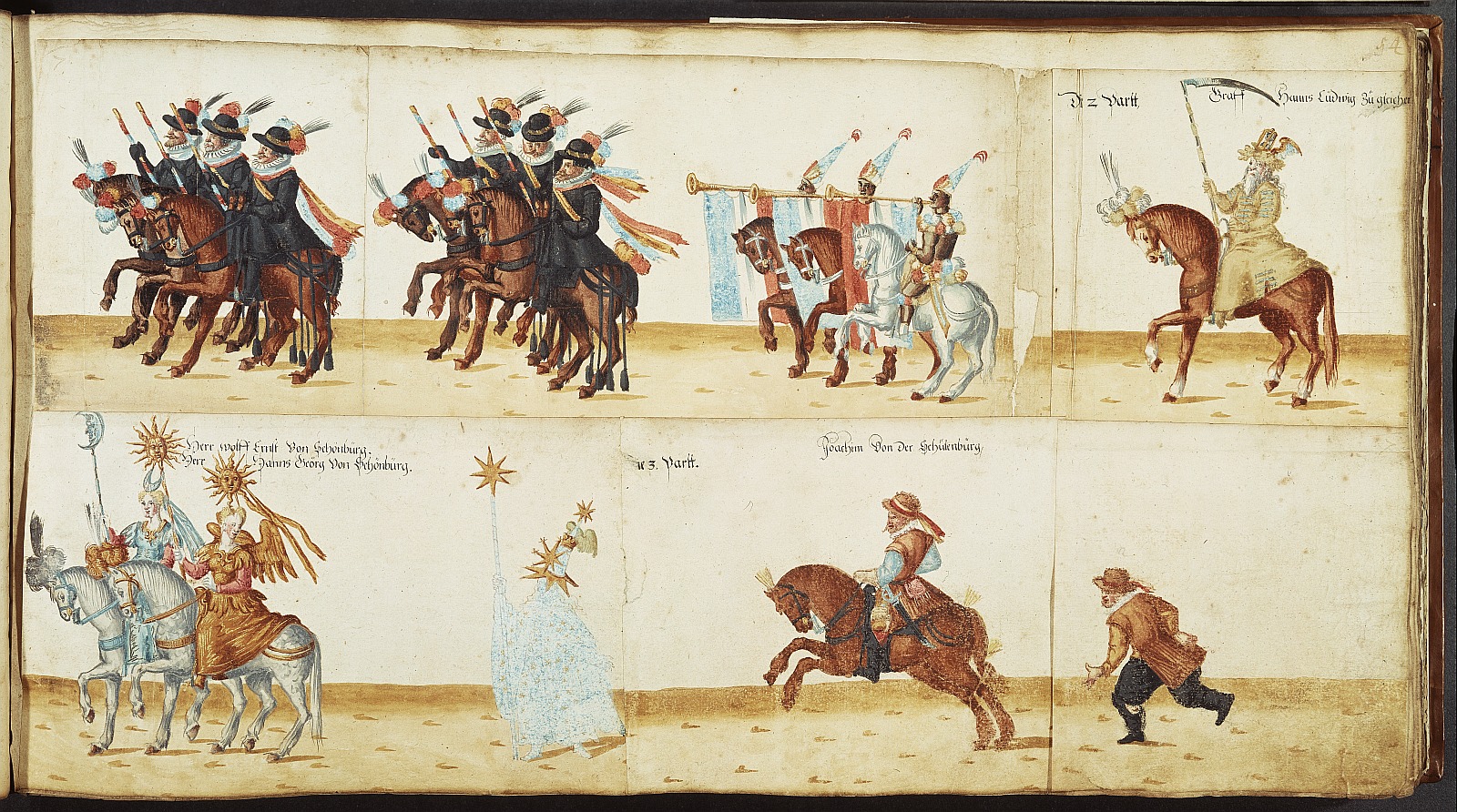
Herolds, Moors with fanfare 
Herolds, moors, ladies’ choir 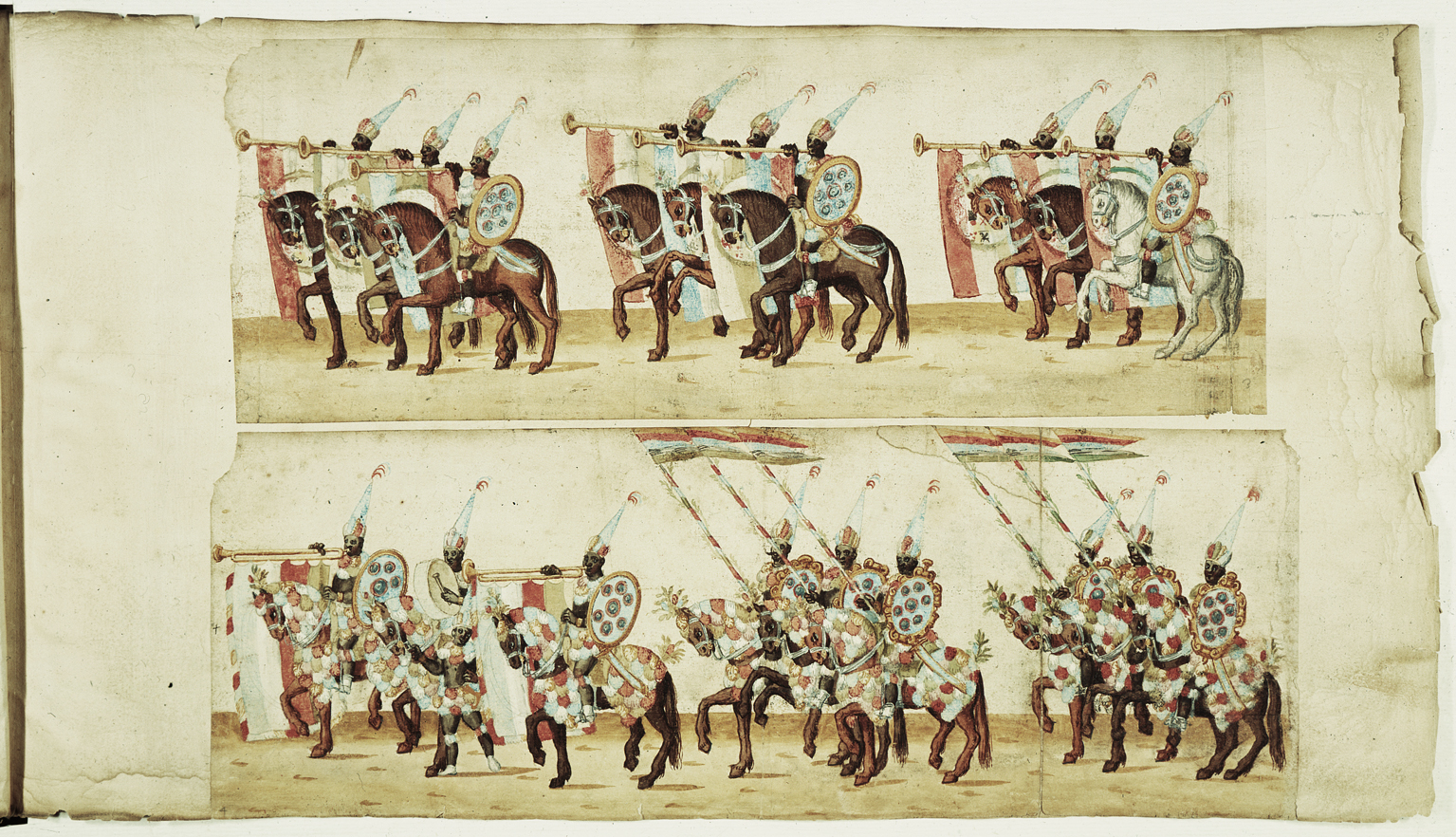
Heralds and trumpets 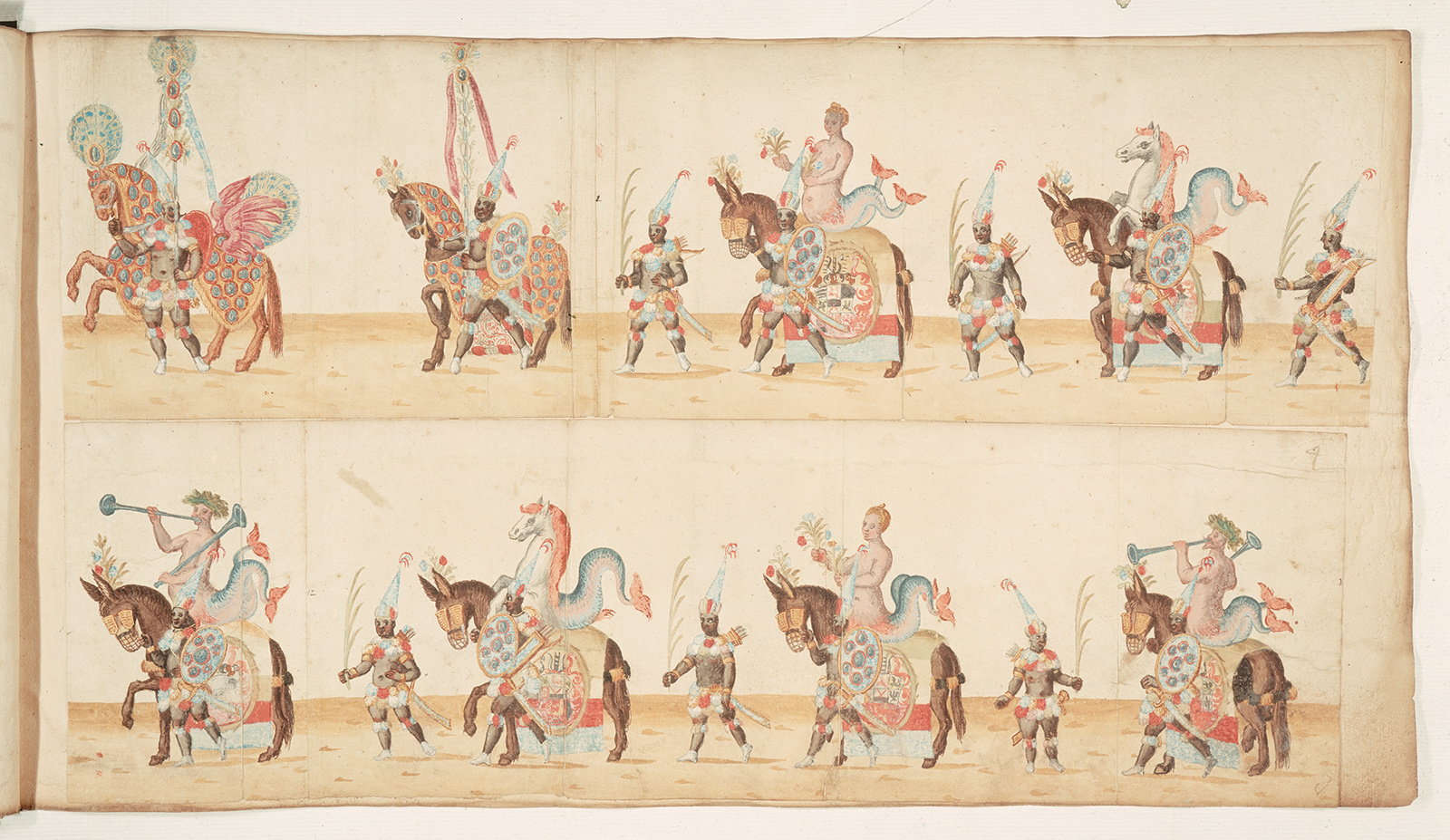
Nixies and Tritons 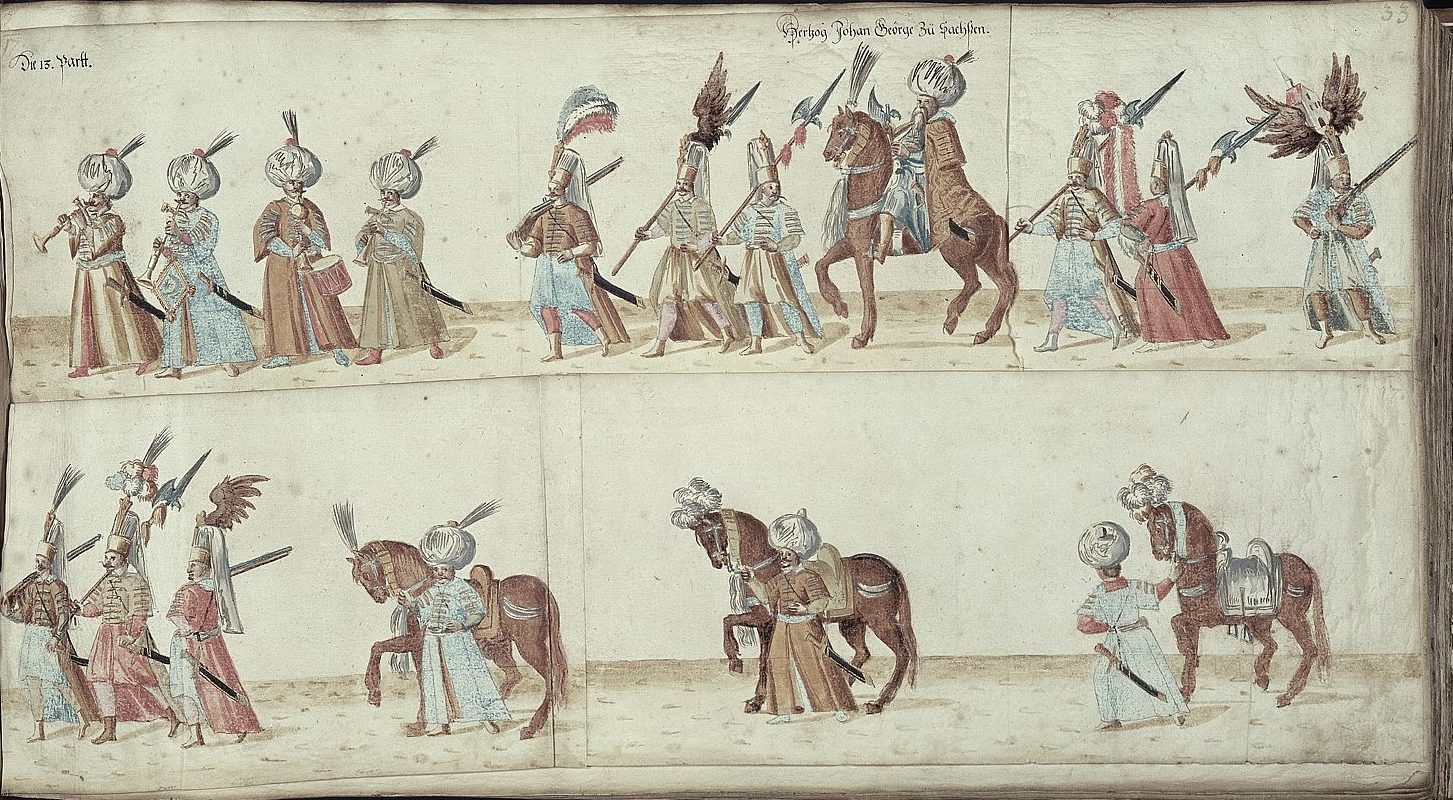
Turkish musicians, Duke Johann Georg of Saxony as Sultan 
Heralds and trumpets 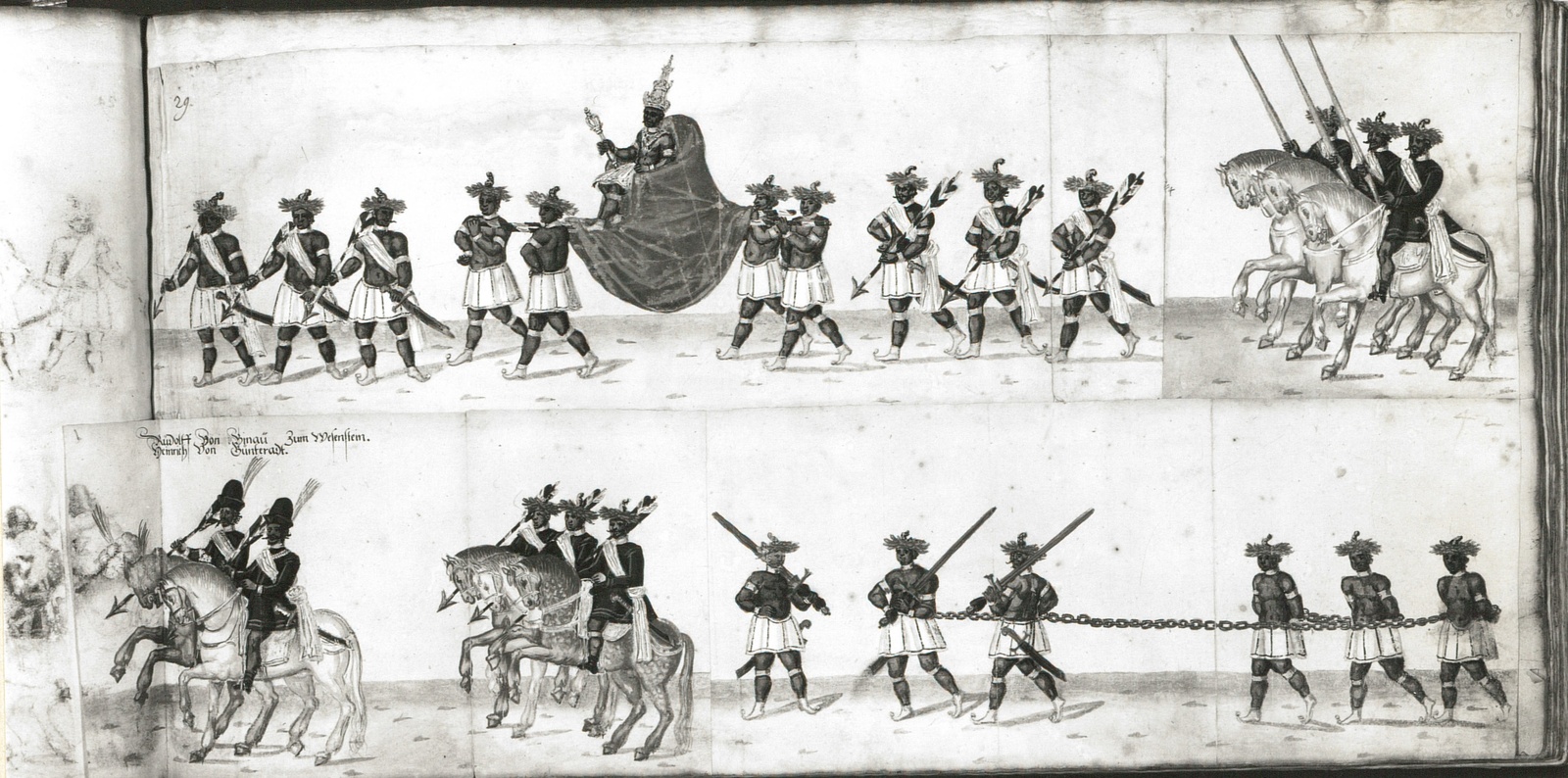
King of the Moors, riders leading slaves 
Heralds and the Duke of Saxony
The court artist to the Duke of Saxony, Daniel Bretschneider the Elder, produced a catalogue that shows off the costume designs for a year’s worth of courtly celebrations. There are fifty-one images in total, and they run the gamut from depictions of mundane figures like soldiers and hunters to mythical creatures, from fools to animals. Similarly to the “wild men,” in these illustrations, the “Moors” are largely naked, although the clothes and banners they wear are exceptionally colorful and marked by standard “exotic” features like feathers, turbans, and curved swords. In one, the figures parade with what appear to be white Spanish heads on pikes. In another, the retinue of a King of the Moors includes a number of slaves in chains. The cover image of a catch-the-ring contest, which includes riders dressed in European and “moorish” fashion, gives a sense of the activities that guests would take part in. As the images of Duke Johann Georg of Saxony as a sultan and Margrave Christian of Brandenburg as an “Indian” illustrate, even the most noble guests took full part in dressing up as exotic characters.
Jeff Bowersox
deutsch
Source: Daniel Bretschneider, Abriß und Verzeichnis aller Inventionen und Aufzüge, welche an Fastnachten, Anno 1609 im kurfürstl. Schlosse zu Dresden aufgefuhrt wurden, Sächsische Landesbibliothek — Staats- und Universitätsbibliothek (SLUB) Dresden Mscr.Dresd.J 18. Images by Andrè Rous via Deutsche Fotothek. ©Andrè Rous.

Dressing up as Moors at court (1609) by Jeff Bowersox is licensed under a Creative Commons Attribution-ShareAlike 4.0 International License. Permissions beyond the scope of this license may be available at https://blackcentraleurope.com/who-we-are/.